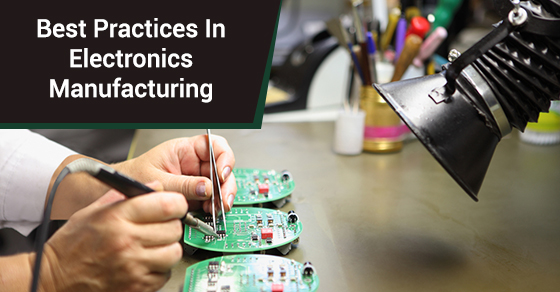Four Best Practices In Electronics Manufacturing
Electronics manufacturing has many facets that cannot be taken for granted. No matter what product you are creating, there are four best practices that anyone involved in the electronics manufacturing industry should adhere to. If you don’t follow electronics manufacturing best practices you could end up with a faulty product and some very unhappy customers.
- Don’t settle for the status quo:
Are your design specs, boards and components efficient or could they be even more effective? There’s always room for improvement when it comes to the manufacturing of electronics and you should make sure your product is as efficient as it could be. This may mean reducing the number of components used, streamlining part of the process, and even taking apart the product completely to determine what areas can be made better. Think of it this way your product will have a warranty, sohow much will it cost you to replace faulty parts on a regular basis? The more confidence you have in your product because you were able to make it perfect before it went to market, the less troublesome repairs you’ll need to perform in the future. You’ll build customer loyalty and only need to replace parts rarely instead of all the time.
- Cutting corners gets you nowhere:
Since you’re already trying to make the best product you can, cutting corners will only lead to problems. Purchasing sub-par parts or working in unsafe conditions because it’s cheaper can cause injury or a shutdown of your entire operations. You might save money at the beginning but you’ll pay for it in the long run.
- Stay local:
If you can work with local contractors, manufacturers and engineers, you are contributing to the local economy and keeping Canada on the map when it comes to the electronics manufacturing industry. The same goes for the equipment rentals and big-ticket items used to make your product. The only time you should look into manufacturing overseas is if there is such a high demand for your product in that area that you need to open up local operations to keep up.
- Consider batch sizes:
Your goal is to be efficient, which means you need to consider the batch sizes of your manufacturing runs. It will be a waste of your time and money to constantly have to switch between a large order and a smaller order. Stick with smaller batch sizes first and then move on to larger ones as demand increases.

